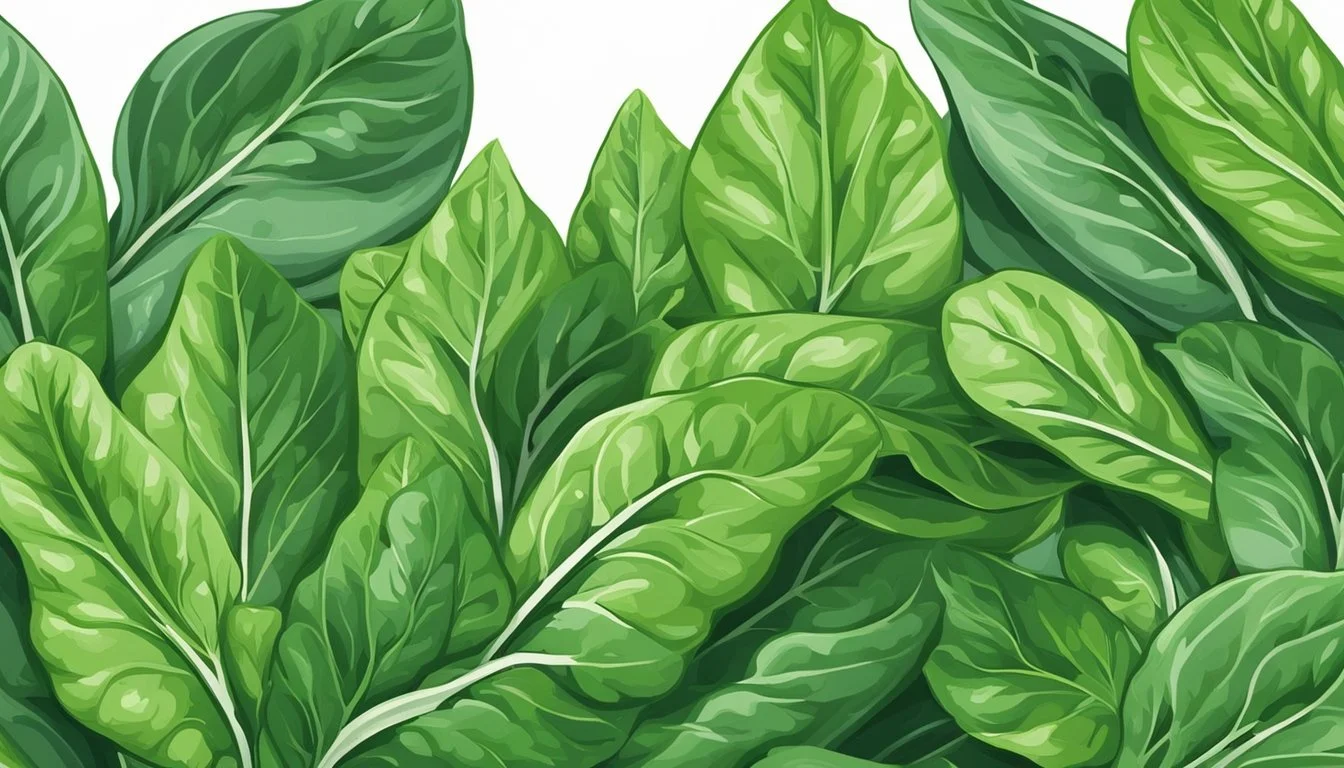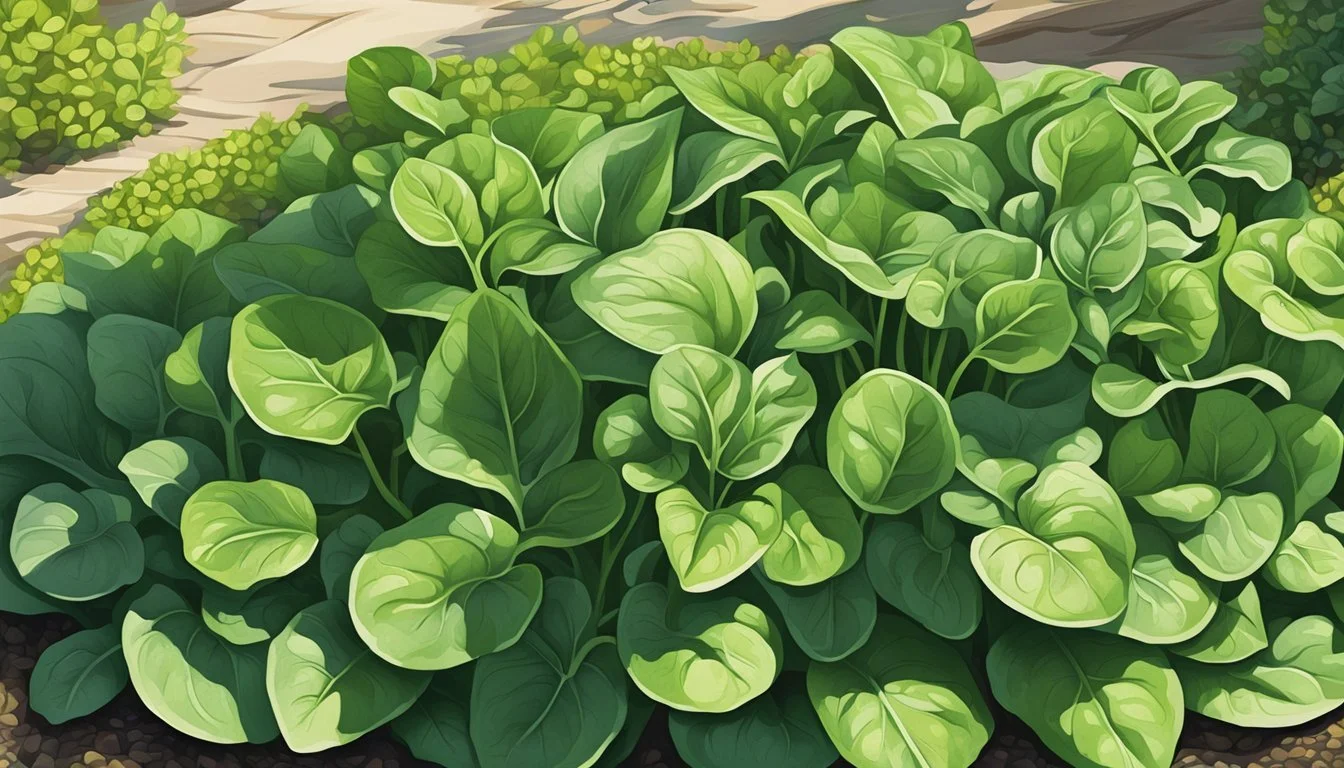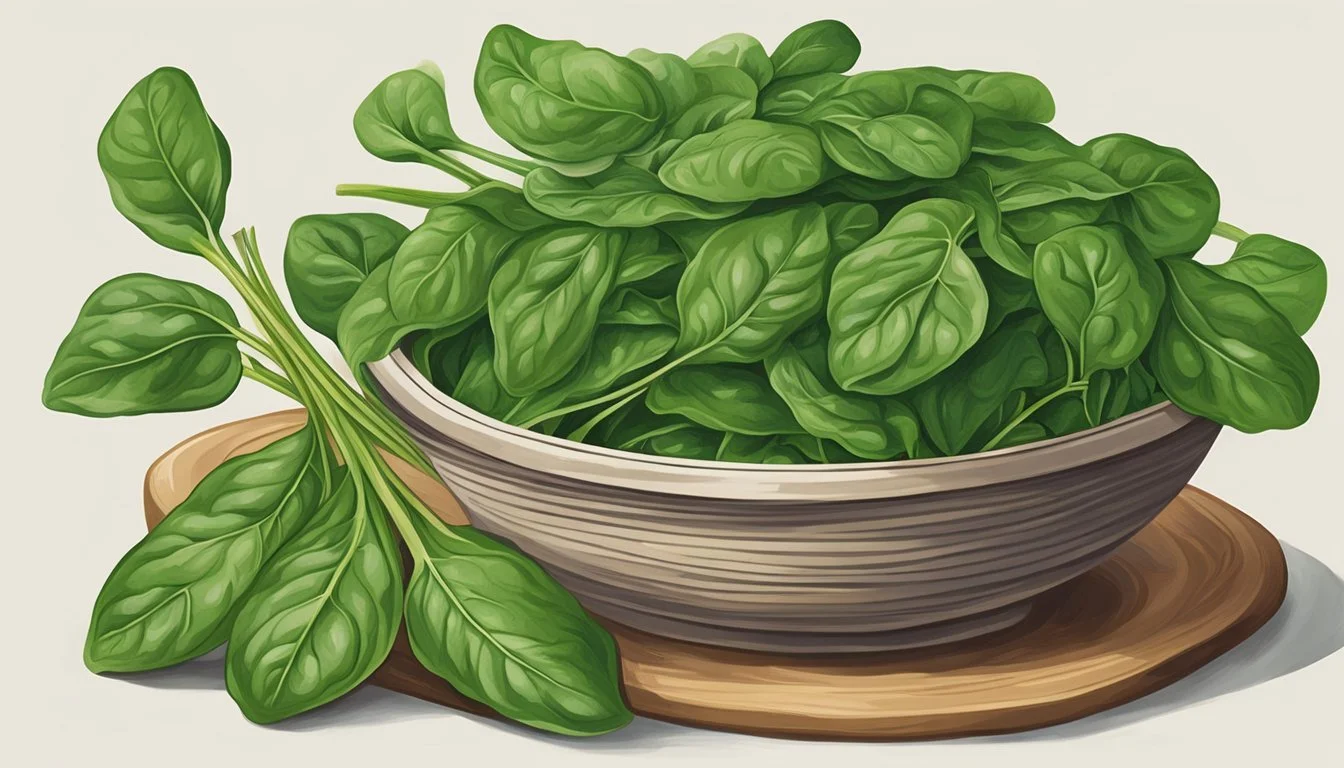Sissoo Spinach Substitutes
Top Alternatives for Your Recipes
For those seeking a versatile substitute for traditional spinach, Sissoo spinach offers an excellent alternative. Known botanically as Alternanthera sissoo, this heat-loving perennial thrives in tropical and subtropical climates, making it perfect for regions where regular spinach might struggle. Its dense, mat-like growth not only serves as a nutritional powerhouse but also doubles as an effective ground cover, preventing weed growth and promoting soil health.
Although Sissoo spinach can be a standout in the garden, there are times when alternatives might be necessary. Traditional spinach substitutes such as chard or kale offer similar nutritional profiles and can be more accessible in temperate climates. Brazilian spinach, a close relative of Sissoo, also makes an excellent replacement due to its similar texture and growth habits. Both alternatives can be utilized in a variety of culinary applications from fresh salads to hearty stews.
For cooks looking to experiment, using Sissoo spinach as a base for chimichurri or pesto can offer a fresh twist on these familiar sauces. Beyond salads and cooking, it’s a versatile green that seamlessly integrates into dishes where regular spinach would typically dominate. This adaptability ensures that regardless of climate or availability, there's always a green, nutritious option ready to enhance meals.
Understanding Sissoo Spinach
Sissoo spinach, also known as Brazilian spinach or Alternanthera sissoo, is a hardy, perennial groundcover that thrives in tropical and subtropical climates. This edible plant is versatile, offering various health benefits and culinary uses.
Botanical Profile and Growing Conditions
Sissoo spinach (Alternanthera sissoo) is a tropical perennial plant. It spreads quickly, forming dense mats and can grow up to one foot in height.
This plant thrives in USDA zones 10 through 12 and prefers areas with high humidity and partial shade. While it can tolerate full sun, it fares best in shady garden beds or the understory of larger plants. Its ability to withstand high heat makes it an ideal edible groundcover in hot climates.
Propagation is simple; stem tip cuttings with one or two nodes root easily in the soil. This characteristic makes it a practical choice for gardeners looking to cover ground quickly with minimal effort.
Nutritional Value and Health Benefits
Sissoo spinach is rich in vitamins and minerals, beneficial for overall health. It is particularly high in vitamin K, vitamin A, iron, and calcium. These nutrients are essential for maintaining bone health and supporting the immune system.
The plant's leaves are also a good source of vitamin C, which plays a crucial role in collagen synthesis and wound healing. However, it's important to note that sissoo spinach contains oxalates, which can contribute to kidney stones in susceptible individuals if consumed in large quantities.
Culinary Uses
Sissoo spinach is highly valued for its culinary versatility. It can be used as a spinach substitute in various dishes.
Common culinary uses include adding it to salads, stir-fries, smoothies, soup, quiches, and pies. The leaves are crunchy and do not have a slimy texture, making them a pleasant addition to a variety of recipes. They impart a mild, nutty flavor to dishes and can be used fresh or blanched.
One popular preparation involves incorporating sissoo spinach into pestos or using it late in the cooking process for soups and curries to preserve its texture and nutritional value.
Primary Sissoo Spinach Substitutes
When looking for substitutes for Sissoo spinach, various leafy green vegetables can offer similar nutritional benefits and culinary versatility. Key options include spinach varieties, Swiss chard, kale, Malabar and New Zealand spinach, and other leafy greens.
Spinach and its Varieties
Spinach is one of the closest substitutes for Sissoo spinach. Its tender leaves and mild flavor make it ideal for salads, stir-fries, and smoothies. Baby spinach is particularly popular due to its delicate texture and slightly sweet taste.
Savoy spinach and flat-leaf spinach are other varieties that offer different textures and can be used in a variety of dishes. These varieties are rich in vitamins A, C, and K, as well as iron and calcium.
Swiss Chard
Swiss chard, with its large, vibrant leaves and colorful stems, is a versatile substitute. It offers an earthy flavor with a hint of sweetness. Rich in vitamins A, C, and K, as well as iron, Swiss chard is perfect for addition to salads or cooking in stir-fries.
Chard's stems add a crunchy texture, while the leaves provide a soft bite, making it a great alternative for both raw and cooked dishes. Its slight bitterness can add depth to recipes.
Kale
Kale is a robust alternative to Sissoo spinach with its strong taste and high nutritional value. Varieties like curly kale, Tuscan kale, and baby kale can be used based on the desired texture and flavor. Kale is packed with vitamin K, vitamin A, vitamin C, and calcium.
Its hardy leaves are suitable for salads, soups, and sautéed dishes. Blending kale with other greens can enhance its palatability if its strong flavor is too intense.
Malabar and New Zealand Spinach
Malabar spinach and New Zealand spinach are tropical perennials suitable as substitutes. Both are hardy, heat-tolerant plants with fleshy leaves. Malabar spinach is especially known for its slightly mucilaginous texture when cooked, making it unique in dishes.
These varieties thrive in warm climates and are nutrient-dense, providing vitamins A and C, calcium, and iron. New Zealand spinach has a more traditional spinach flavor and is less slimy, making it versatile for various recipes.
Other Leafy Alternatives
Other leafy greens such as arugula, watercress, and beet greens also serve as excellent substitutes. Arugula offers a peppery taste, while watercress gives a slightly spicy flavor, both adding unique notes to dishes.
Beet greens are similar in texture to spinach and rich in vitamins A and C and calcium. These alternatives are ideal for mixing into salads or cooking into warm dishes, bringing a variety of flavors and textures to your meals.
These substitutes ensure you do not have to miss out on nutritional benefits or taste when Sissoo spinach is not available.
Preparing Sissoo Spinach and Its Substitutes
Proper preparation is essential to maximize the flavor and nutritional benefits of sissoo spinach and its substitutes. This guide covers handling and cooking techniques to enhance your dishes.
Handling and Preparation Techniques
Sissoo spinach leaves should be thoroughly washed to remove any soil or debris. Blanching the leaves in boiling water for 2 minutes and then plunging them into ice water helps maintain their vibrant green color. Afterward, drain and pat them dry before use.
For storage, place blanched leaves in a freezer-safe bag, label it with the date, and freeze for up to 6 months. Utilizing fresh leaves in recipes like salads, pasta sauces, and pesto ensures the best taste and nutrition.
When handling substitute vegetables such as lettuce or other leafy greens, the same washing and blanching techniques apply. Cutting fresh leaves from planted cuttings ensures you have organic, homegrown produce at your disposal.
Cooking Tips for Maximum Flavor
Sissoo spinach excels in a variety of dishes due to its uniquely crunchy texture that pairs well with many ingredients. For sautéed dishes, heat olive oil in a pan, adding chopped garlic, salt, and pepper to taste. Add the spinach and cook until wilted to retain its crunchiness.
In pasta dishes like lasagna, integrating sautéed sissoo spinach enhances both flavor and nutrition. It pairs well with basil in pesto recipes, adding a distinct profile.
Substitute greens should be treated similarly. For salads, fresh leaves combined with a simple olive oil and lemon dressing bring out natural flavors. In stir-fries, quickly cooking substitute greens over high heat with garlic and pepper preserves their texture and taste, providing a nutritious addition to any meal.
Propagating and Cultivating Substitutes
Sissoo spinach is a perennial groundcover that is easy to propagate and cultivate. This plant thrives in high heat and benefits from full sun to partial shade.
Propagation involves taking stem cuttings with one or two nodes. These cuttings root easily whether you plant them directly in a garden bed or start them in water for 3-4 days until roots appear.
For ensuring optimal growth, it's important to plant cuttings in soil rich in organic matter. They can quickly form dense mats, shading out weeds and preventing seed germination. Regular watering and occasional fertilization will support lush, thick growth.
Various substitutes, such as French Spinach (Orache), can be propagated from seeds. Plant the seeds directly into the soil, making sure they have adequate space to avoid bolting.
To manage pests like slugs, use natural deterrents such as diatomaceous earth or organic sprays. Regular inspection of the plants will help in early detection and control of any pest problems.
Propagation and cultivation of these substitutes are straightforward, making them a valuable addition to any garden looking for diversity and resilience.
Health Considerations and Dietary Notes
When considering sissoo spinach substitutes, it's essential to be aware of the health implications, especially regarding oxalates and the nutritional profile of leafy greens.
Impact of Oxalates on Health
Oxalates in certain leafy greens can impact health. High oxalate levels can lead to kidney stones in susceptible individuals. Spinach has a high oxalate content, while alternatives like watercress and butterhead lettuce contain lower oxalate levels, making them suitable for those monitoring oxalate intake.
Key Points:
High oxalate foods: Spinach, beet greens
Lower oxalate foods: Watercress, butterhead lettuce
Low oxalate substitutes may reduce the risk of kidney stones and aid in managing metabolic concerns associated with oxalate-rich diets.
Vitamins and Minerals in Green Vegetables
Leafy greens are a vital source of vitamins and minerals. Spinach is rich in vitamin K, lutein, magnesium, potassium, iron, and calcium. Substitutes like watercress and butterhead lettuce also offer significant nutrients though in varying amounts.
Nutritional Highlights:
Nutrient Spinach Watercress Butterhead Lettuce Vitamin K High High Moderate Lutein High Moderate Low Magnesium High Low Low Potassium High Moderate Moderate Iron High Low Low Calcium Moderate High Low
These vegetables support immune function, bone health, and overall well-being, making them excellent dietary additions.
Cultural Significance and Regional Uses
Sissoo spinach, native to Brazil, is popular in tropical regions. It is often utilized as an edible groundcover in gardens and landscaping. This resilient plant thrives in tropical climates and is cultivated extensively in regions that enjoy such conditions.
In South America, particularly Brazil, sissoo spinach is highly valued for its versatility in local cuisine. It is frequently incorporated into salads, adding a crunchy texture without any sliminess.
Vegetarian dishes benefit from this leafy green, as it complements various recipes including curries, dals, and soups. The leaves, especially the tender young tips, are often pinched off and eaten raw or lightly steamed.
Additionally, it is not uncommon to find sissoo spinach in traditional stews and other hearty dishes, where it brings both flavor and nutritional benefits.
Here’s a simple breakdown of some common uses:
Dish Type Usage Salads Raw Curries Stirred in Dals Mixed in Soups Added for texture Stews Cooked within
By incorporating sissoo spinach into these dishes, it not only enhances the taste but also contributes to the dietary needs of those consuming it.
As an edible groundcover, it serves both aesthetic and practical purposes in landscape design, providing a lush green cover while suppressing weed growth.
This dual function makes it a valuable plant in both agriculture and culinary arts within tropical and subtropical regions.
Gardening and Environmental Impact
Brazilian spinach, also known as sissoo spinach, is valued for its role as an edible groundcover. It grows in dense mats that can suppress weed germination, reducing the need for chemical weed control. This makes it an excellent addition to organic gardens.
When planted in a garden bed, Brazilian spinach serves as a natural groundcover. Its growth habit minimizes soil erosion and maintains soil fertility by retaining organic matter. Furthermore, it provides a habitat for beneficial insects that control garden pests.
Brazilian spinach is a perennial leaf vegetable that stays low and compact. This characteristic makes it suitable for edging pathways, especially in shady areas. Adding to its appeal, the plant is resistant to pests like slugs, which often plague other leafy greens.
Propagation is straightforward. It roots easily when its nodes touch the soil, simplifying the establishment of new plants. Unlike other greens, it rarely bolts even in warmer climates, offering a stable, year-round harvest.
The plant’s flowers are small and mostly insignificant, ensuring that it remains focused on vegetative growth. Its leaves are crunchy and free from a slimy texture, making them a pleasant addition to salads and other dishes.
Brazilian spinach’s ability to shade out the soil significantly impacts the garden environment. By covering the ground, it reduces the surface temperature and moisture loss, creating a favorable microclimate for other plants. This coverage also helps maintain biodiversity within the garden.
The all-around benefits of Brazilian spinach underscore its value not only as a nutritious vegetable but also as a versatile and environmentally-friendly element in garden design.








